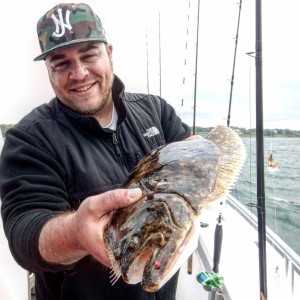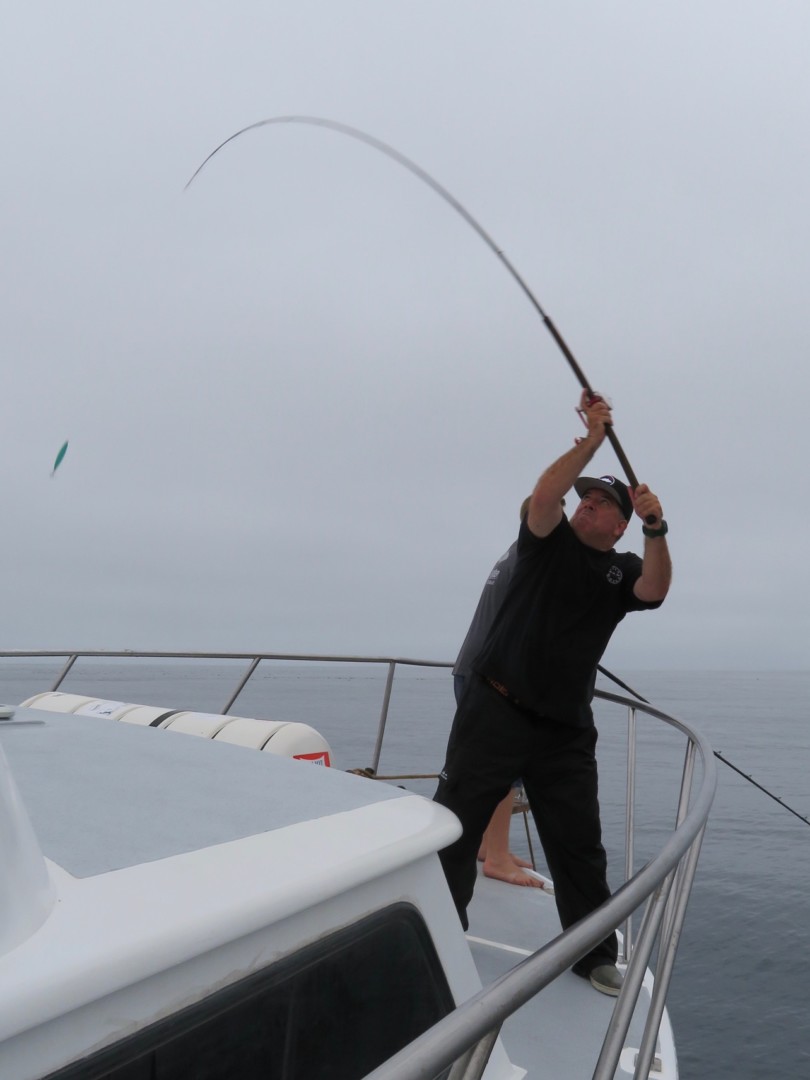Finding the Fluke with Justin Suarez
 When fishing for Fluke (Paralichthys dentatus) or Flounder depending where in the United States you are located it all boils down to determining what techniques and baits you should use at your given location.
When fishing for Fluke (Paralichthys dentatus) or Flounder depending where in the United States you are located it all boils down to determining what techniques and baits you should use at your given location.
In NJ our waters are teeming with Fluke in water depths that range as shallow as 3 feet of water to as deep as 90-100 feet of water with water temperature playing a vital role in finding these beautiful flatfish. Contrary to what most anglers think of this highly sought after flat fish, Fluke are notoriously aggressive ambush predators. The forage on the menu is quite varied from bluefish,porgies,shrimp,small crabs, squid and even bunker, Fluke will dine on just about anything properly presented.
So lets breakdown the different seasons and techniques. In the spring these fish are making their annual trek from the deep shelf waters in the Atlantic to their temporary homes in shallow warmer waters in our bays, inlets and estuaries. I arm myself with a 7 foot rod rated 12-20lbs with a fast action matched with the Accurate Fury 400nx, it is here that utilizing small Bucktail Jigs from 1oz to 2oz in weight tipped with either cut squid and or spearing will work well. But one can also use a live bait rig with a killie or minnow with a small 1 oz sinker attached to target the early season fluke in its 3-8 foot environment. Look for mussel beds in bays and slopes in the bottom that will rise from 12 or 15 feet to 8 feet. This area on an outgoing tide will provide a solid chance at hooking up with a larger Fluke especially at the top of the tide. When working a Bucktail Jig either tipped with cut bait, live bait, or with a GULP Swimming Mullet one can run a teaser about 15 inches above the Bucktail. The teaser can be baited or dressed with a GULP Swimming mullet and will entice the curious Fluke to strike. I personally like to keep my Bucktail constantly bouncing off the bottom throughout my drift. Never let the Bucktail just sit on the bottom without movement. The key to bucktailing is a rhythmic constant motion never in a exaggerated fashion but a constant smooth rhythmic bouncing off the bottom as you drift over prime Fluke Real Estate.
 As Spring turns into Summer and the waters off our coast begin to warm start changing your train of thought from bay to ocean when targeting Fluke. The voracious Fluke will start to populate the wrecks, structures and bumpy bottoms starting in about 35 feet of water out to 55 feet. You can scale up your Bucktails dependent on what you need to hold bottom and the choice of GULP or Cut bait is yours but these voracious Fluke truly find GULP hard to pass up. When picking a color for your Bucktail or Gulp think of the environment that you will be fishing. Is it a hard dark bottom? Muddy Bottom? Sandy Bottom? Dependent on what kind of bottom you have you can go with either a dark or light colored Bucktail that is in contrast to the bottom you are fishing. So if you know its a dark bottom go with a light color that stands out. If you are fishing a light colored bottom like a sandy bottom make sure to go with a dark color that stands out in contrast to your bottom. White, Chartreuse, and Glow Patterned Bucktails are always in my arsenal.
As Spring turns into Summer and the waters off our coast begin to warm start changing your train of thought from bay to ocean when targeting Fluke. The voracious Fluke will start to populate the wrecks, structures and bumpy bottoms starting in about 35 feet of water out to 55 feet. You can scale up your Bucktails dependent on what you need to hold bottom and the choice of GULP or Cut bait is yours but these voracious Fluke truly find GULP hard to pass up. When picking a color for your Bucktail or Gulp think of the environment that you will be fishing. Is it a hard dark bottom? Muddy Bottom? Sandy Bottom? Dependent on what kind of bottom you have you can go with either a dark or light colored Bucktail that is in contrast to the bottom you are fishing. So if you know its a dark bottom go with a light color that stands out. If you are fishing a light colored bottom like a sandy bottom make sure to go with a dark color that stands out in contrast to your bottom. White, Chartreuse, and Glow Patterned Bucktails are always in my arsenal.
As Summer begins to reach its peak these fish will push out to deep waters, inhabiting structure, wrecks and rolling bottoms in as deep as 100 feet of water.Now it’s time to step up in size all around. I fish a 7foot rod rated 15-30 lbs with a medium action and arm it with an Accurate Fury 500nx with this set up I fish large 6-8oz Bucktails tipped with long strips of squid ad large baits. If you are searching for that double digit trophy fish I would recommend fishing a bait setup. Fish a stinger rig setup baited with a whole squid. The squid should be large in the 6-10inch range. Place your main hook through the top of the mantel of the squid and run the stinger rig 3-4 inches down from there. You can play around with the measurements as long as the squid is straight and not bent or crooked in any way. Drop that rig down to the bottom and leave it still on the bottom every once in awhile lifting it up slowly to letting it flutter back to the bottom. This technique has produced Dozens of Double Digit Fluke for me but you have to be one with the fish and have tremendous patience. Our 2016 Fluke Season begins May 22nd here in NJ and we are all looking forward to targeting these hard pulling and delicious flat fish!
Hoping to put a few more doormats on the deck!
Justin Suarez
Team Accurate
 Custom Color Reels
Custom Color Reels










